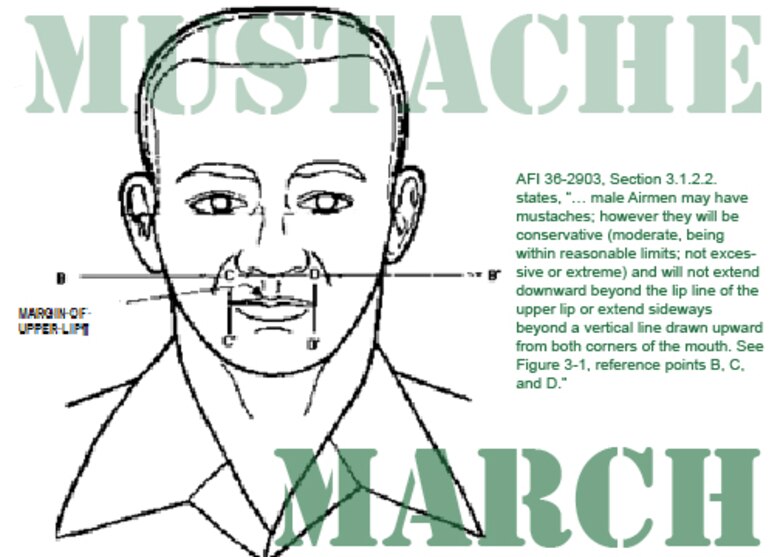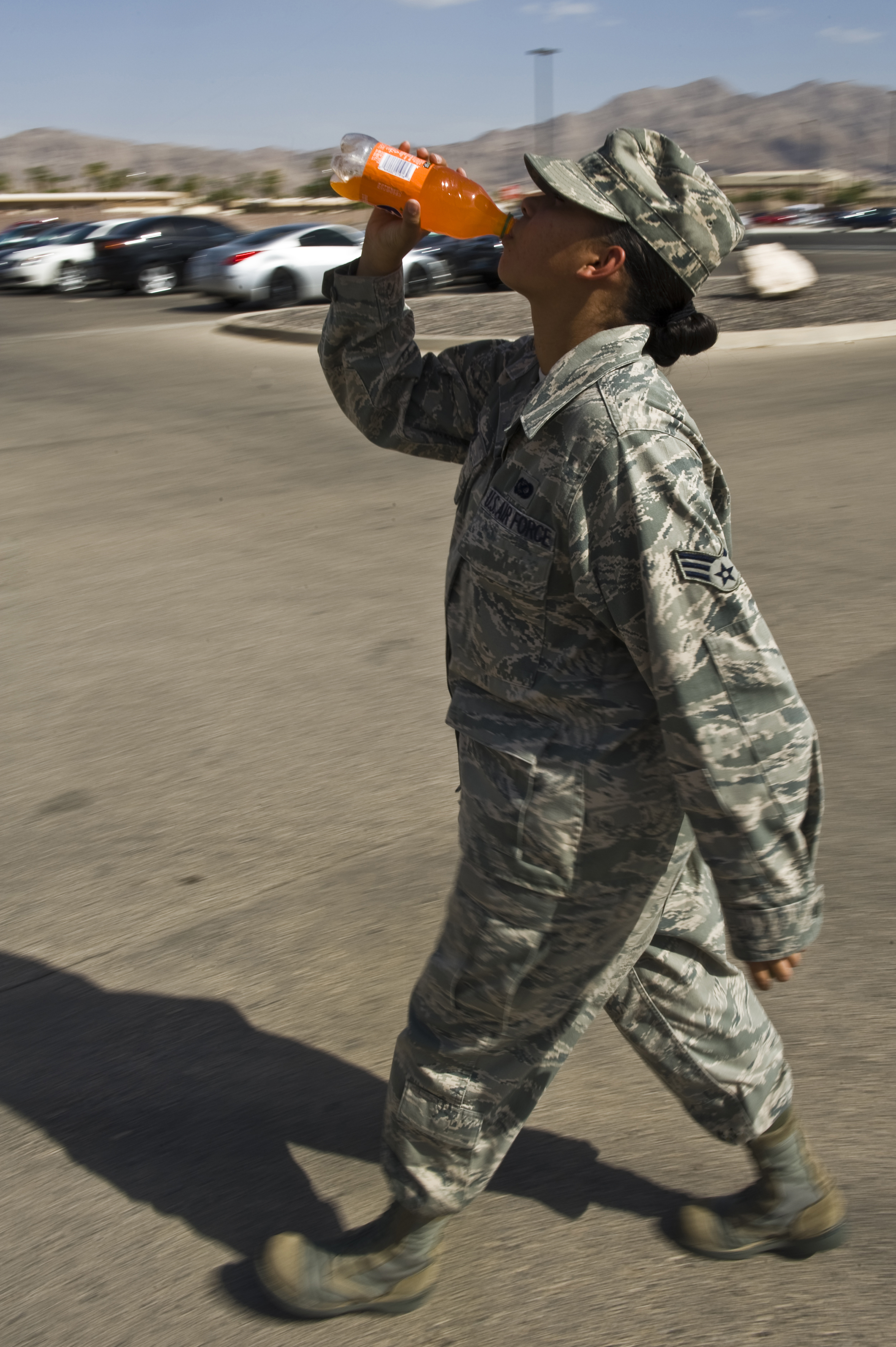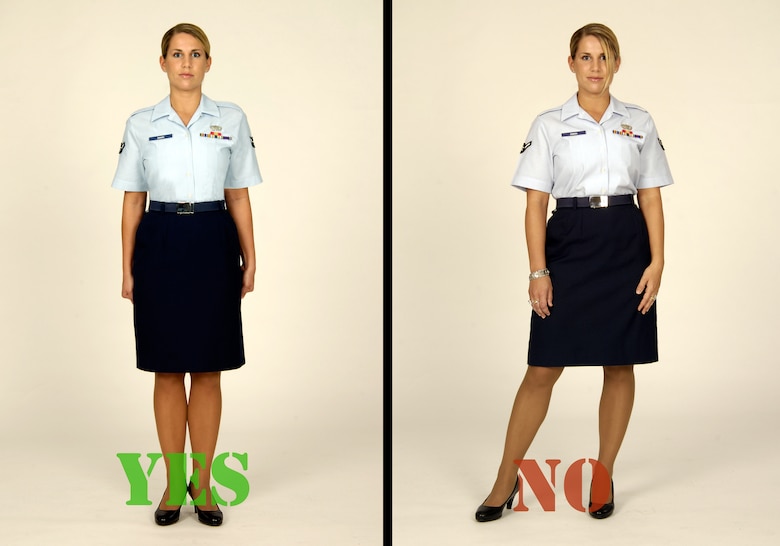Afi 36-2903 Mustache Regulation
Mustache Regulation in the Air Force - AFI 36-2903
The United States Air Force has always been recognized for its professionalism, discipline, and attention to detail. One of the aspects that contributes to this image is the adherence to AFI 36-2903, the regulation that governs the dress and appearance standards of Air Force personnel. While many might think that this document is solely about uniforms, it also includes guidelines and restrictions regarding facial hair. Let's take a closer look at the mustache regulation within AFI 36-2903 and uncover some interesting facts and FAQs about this particular topic.
1. The Evolution of Mustache Regulation
The Air Force's stance on mustaches has evolved over the years. Originally, facial hair was not allowed, but as time went on, relaxed regulations began to allow neatly trimmed mustaches. However, it is important to note that there are still specific guidelines in place to ensure that mustaches are professional and not excessive.

Image Source: Reddit
2. AFI 36-2903 Mustache Standards
AFI 36-2903 provides clear instructions on the acceptable standards for mustaches in the Air Force. According to the regulation, mustaches should be neatly trimmed and not extend beyond the corners of the mouth. Additionally, they should not cover the upper lip entirely. This ensures that the mustaches do not interfere with the proper fit of protective masks and respirators, which are crucial in certain operational environments.

Image Source: Defense.gov
3. Frequently Asked Questions (FAQs)
Q: Can I have any style of mustache as long as it meets the AFI 36-2903 guidelines?
A: No, AFI 36-2903 specifies that mustaches should be conservative and not eccentric or trendy. The intent is to maintain professionalism and ensure that mustaches do not become a distraction or hinder operational effectiveness.
Q: Is it mandatory for all Air Force personnel to have a mustache?
A: No, having a mustache is entirely optional. The choice to grow and maintain a mustache lies with each individual, as long as it adheres to the guidelines provided by AFI 36-2903.
Q: Can women have mustaches in the Air Force?
A: No, according to AFI 36-2903, women are not permitted to have mustaches. The regulation applies specifically to male Air Force personnel.
Q: Are there any consequences for not complying with the mustache regulation?
A: Yes, failing to comply with the mustache regulation may result in disciplinary action, as it is considered a violation of the Air Force's dress and appearance standards. It is important for all personnel to adhere to the guidelines outlined in AFI 36-2903.
Conclusion
AFI 36-2903 plays a significant role in maintaining the professional image of the United States Air Force. By providing clear guidelines regarding mustaches, the regulation ensures that individual expressions of style do not compromise operational readiness or detract from the overall uniformity within the organization. Air Force personnel should familiarize themselves with AFI 36-2903 to ensure they understand and comply with all the guidelines regarding mustaches and other aspects of dress and appearance.
References
- Reddit: https://preview.redd.it/3b1ovnnmzbez.jpg?auto=webp&s=0718027c37e592beedd5401830b9b38990987ee7
- Defense.gov: https://media.defense.gov/2021/Mar/31/2002611436/-1/-1/0/210331-F-BQ566-1001.JPG
Mustache March Maximizes Manliness > Air Force District Of Washington
 Image Source : www.afdw.af.mil
Image Source : www.afdw.af.mil mustache force air afi 2903 manliness maximizes march male details hi res
When You Know AFI 36-2903 But You Want To Be In Style : AirForce
 Image Source : www.reddit.com
Image Source : www.reddit.com afi force 2903 airforce
Afi36-2903
 Image Source : studylib.net
Image Source : studylib.net Art
 Image Source : www.nellis.af.mil
Image Source : www.nellis.af.mil afi 36 2903 force air dress appearance walking improper while aug nellis uniform airmen drink eat states af
Mustache? : AFROTC
 Image Source : www.reddit.com
Image Source : www.reddit.com mustache 2903 afi afrotc
Air Force Updates To AFI-36-2903, Dress And Personal Appearance
 Image Source : csmng.com
Image Source : csmng.com 2903 afi csmng
Dress (and Behave) For Success - Use AFI 36-2903 > Hurlburt Field > Display
 Image Source : www.hurlburt.af.mil
Image Source : www.hurlburt.af.mil dress afi 2903 36 behave success force air af class use airman field details hi res
Hair Problems, A March To Remember > Incirlik Air Base > Display
 Image Source : www.incirlik.af.mil
Image Source : www.incirlik.af.mil Mustache 2903 afi afrotc. Mustache force air afi 2903 manliness maximizes march male details hi res. Mustache? : afrotc. Afi force 2903 airforce. Dress (and behave) for success